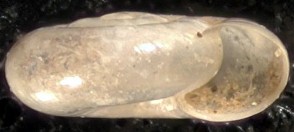Throughout the evolution of life every animal has changed to adapt to a more successful lifestyle. The Oldfield Coil are no different than every other animal.

Lucilla genus carries their shells horizontally on the back portion of the foot (Pilsbry, 1939-48). This style of holding the shell is different than most land snails. The coiling faces up, instead of the natural coiling to the right or left at a slight angle. It is a style of the Lucilla genus. Another adaption dealing with the shell position is torsion. Torsion is the twisting of the body parts causing the mouth and anus to be in relatively the same location (Hickman, 2009).
The genus has their eyes located on short, anterior tentacles. They appear to be plump but not swollen at the ends. Also, the eyes do not have pigment (Pilsbry, 1939-48). The foot, of Mollusks, is used for moving around their habitat by muscular contractions. It can also be used for an attachment site to different types of substrates. Other Mollusks even use their foot for moving through water and propelling them to their destination. Since Oldfield coil is a land snail, it has changed the necessity of having gills. L. inermis has adapted to breathing air by a vascularized mantle. Their mantle functions as a lung, and it is very long and narrow. It fills with air by contracting the mantle (Pilsbry, 1939-48).
The species Lucilla inermis does not have very specific information available to learn about its environmental stimuli, or not a lot of research has been done on how it interacts with other organisms.
Click the snail to proceed onto
Nutrition.
